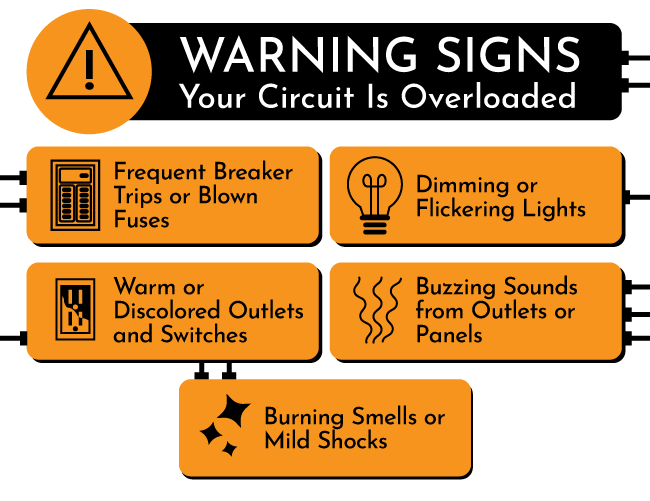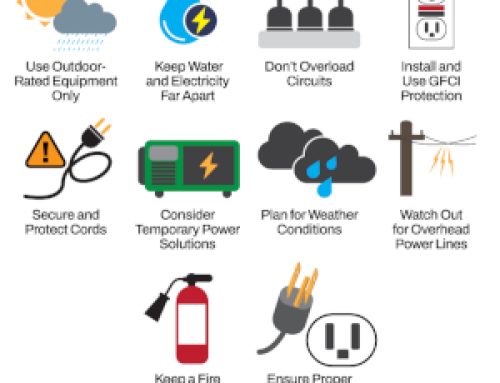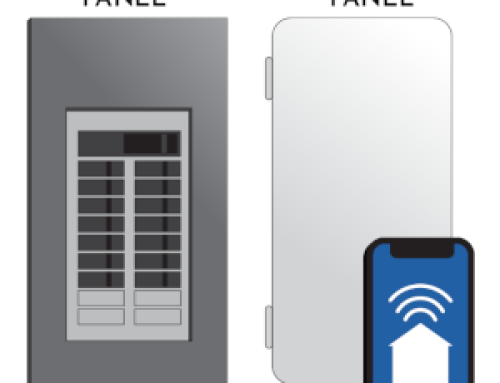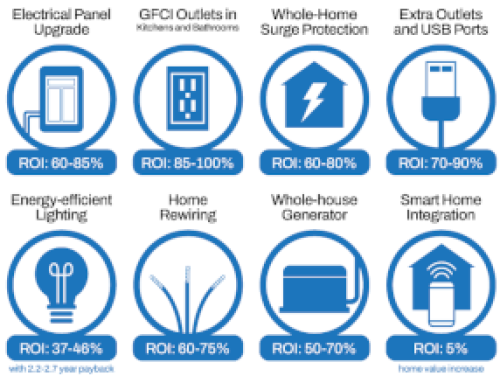Every year in the U.S., electrical malfunctions cause over 51,000 home fires, many of which are due to overloaded circuits. In a world where we’re constantly plugging in new gadgets, appliances, and smart devices, our homes are being pushed beyond their original electrical capacity.
Overloaded circuits might seem like a minor inconvenience at first—maybe a breaker trip here or a flickering light there—but the risks run deeper. From fire hazards to damaged electronics, the dangers are real and often hidden.
In this article, we’ll explain what overloaded circuits are, how to recognize the warning signs, what dangers they pose, and what you can do to stay safe.
What is an Overloaded Circuit?
Think of your electrical circuit like a freeway—it can handle only so many vehicles (or in this case, watts of power) at once. When you plug in too many high-demand devices, you exceed the circuit’s capacity, creating an “electrical traffic jam” that can lead to overheating and failure.
Each circuit in your home is rated for a specific number of amperes (amps)—usually 15 or 20.
The total wattage of the devices plugged into that circuit should not exceed that rating. Exceeding this limit causes the circuit breaker to trip or, worse, allows heat to build up in your wiring, increasing the risk of fire.

5 Dangers of Overloaded Circuits
1. Fire Hazards
An overloaded circuit generates heat, which can melt insulation around wires or ignite surrounding materials. This is one of the leading causes of electrical fires in homes.
2. Damage to Electronics and Appliances
Overloads can cause power surges that fry delicate electronics or shorten the lifespan of expensive appliances. Replacing them can be costly. Also, damaged appliances can lead to a greater risk of fire hazards.
3. Reduced Efficiency and Power Outages
Too much strain on your system can lead to random shutdowns, flickering lights, or even a full power outage in parts of your home. This could potentially increase your energy bills and affect your comfort.
4. Electrical Shocks
Outlets or switches connected to overloaded circuits can deliver small but dangerous shocks when touched. This is especially dangerous if you have small children or pets around.
5. Tripped Circuit Breakers
Constantly tripping circuit breakers means that home appliances will also go off at random times and be unable to function properly. While circuit breakers are built-in safety mechanisms, frequent tripping is a sign of deeper problems that shouldn’t be ignored.
How to Avoid Overloaded Circuits
Understand Your Circuit Limits
Each circuit in your home is designed to handle a specific electrical load. If you’re unsure of what your circuits can safely manage, check the breaker panel labels or consult an electrician. Staying within these limits is key to preventing overloads.
Spread Out High-Wattage Appliances
Avoid plugging multiple power-hungry devices—like space heaters, microwaves, or hair dryers—into the same outlet or circuit. Distribute them across different rooms or circuits to minimize electrical strain.
Use Surge Protectors Wisely
Surge protectors help protect devices from voltage spikes, but they’re not a license to plug in everything you own. Choose high-quality surge protectors with overload protection, and still be mindful of how many devices you connect.
Skip the Daisy Chains
Plugging one extension cord or power strip into another (known as daisy chaining) is a fire hazard. Use only one extension cord per outlet and make sure it’s rated for the load it’s carrying.
Unplug What You Don’t Use
Even when turned off, many devices draw a small amount of power. Unplugging items like chargers, toasters, and gaming systems when not in use can reduce overall demand on your circuits.
Choose Energy-Efficient Appliances
Upgrading to ENERGY STAR-rated appliances not only reduces energy consumption but also lessens the load on your home’s wiring—especially during peak usage times.
Schedule Routine Electrical Inspections
An electrician can inspect your system for signs of wear, outdated components, or circuits under strain. Catching problems early is one of the best ways to prevent overloads and improve safety.
Upgrade Old Wiring or Panels
Older homes often aren’t equipped to handle the demands of today’s tech-heavy lifestyles. If your panel is outdated or your wiring is aging, an upgrade could be a smart investment in safety and performance.
Install Dedicated Circuits for High-Demand Devices
Appliances like HVAC systems, refrigerators, and washing machines should have their own circuits. This prevents them from overloading shared lines and improves overall system stability.
Frequently Asked Questions
Power Up the Smart Way
Overloaded circuits are not just an inconvenience—they’re a serious safety hazard that can cause long-term damage or even house fires. Don’t wait until you smell smoke or lose power to act.
At Brand Home Service, we help homeowners stay safe, efficient, and up-to-code.
Whether you’re planning a renovation, adding smart devices, or just want peace of mind, contact us today for a comprehensive electrical inspection or panel upgrade.
Stay safe. Stay powered. Choose Brand Home Service for electrical upgrades in Lafayette, IN.



